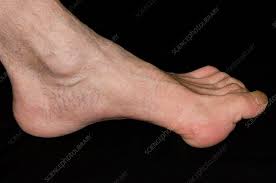
Cavus foot, also known as high arches, is a condition in which the arch of the foot is higher than normal. This can cause increased pressure on the heel and ball of the foot, making it difficult to walk or stand for long periods of time.
Cavus foot can be caused by a variety of factors, including genetics, neurological disorders such as cerebral palsy or Charcot-Marie-Tooth disease, trauma, or muscle imbalances. In some cases, there may be no apparent cause.
Symptoms of cavus foot can include pain or discomfort in the foot, ankle, or leg, difficulty walking or standing for long periods of time, and an unstable or wobbly gait. In severe cases, the foot may develop calluses, corns, or ulcers due to the increased pressure on certain areas of the foot.
Treatment for cavus foot depends on the underlying cause and the severity of the condition. Conservative measures may include wearing shoes with good arch support and cushioning, using custom orthotics or inserts to redistribute pressure on the foot, and physical therapy to strengthen and stretch the muscles in the foot and ankle. In more severe cases, surgery may be necessary to correct the alignment of the foot and relieve pressure on the affected areas.
It is important to seek medical attention if you experience persistent pain or discomfort in your foot or if you have concerns about your foot alignment or gait. A healthcare professional can diagnose cavus foot and recommend an appropriate treatment plan based on your individual needs.
